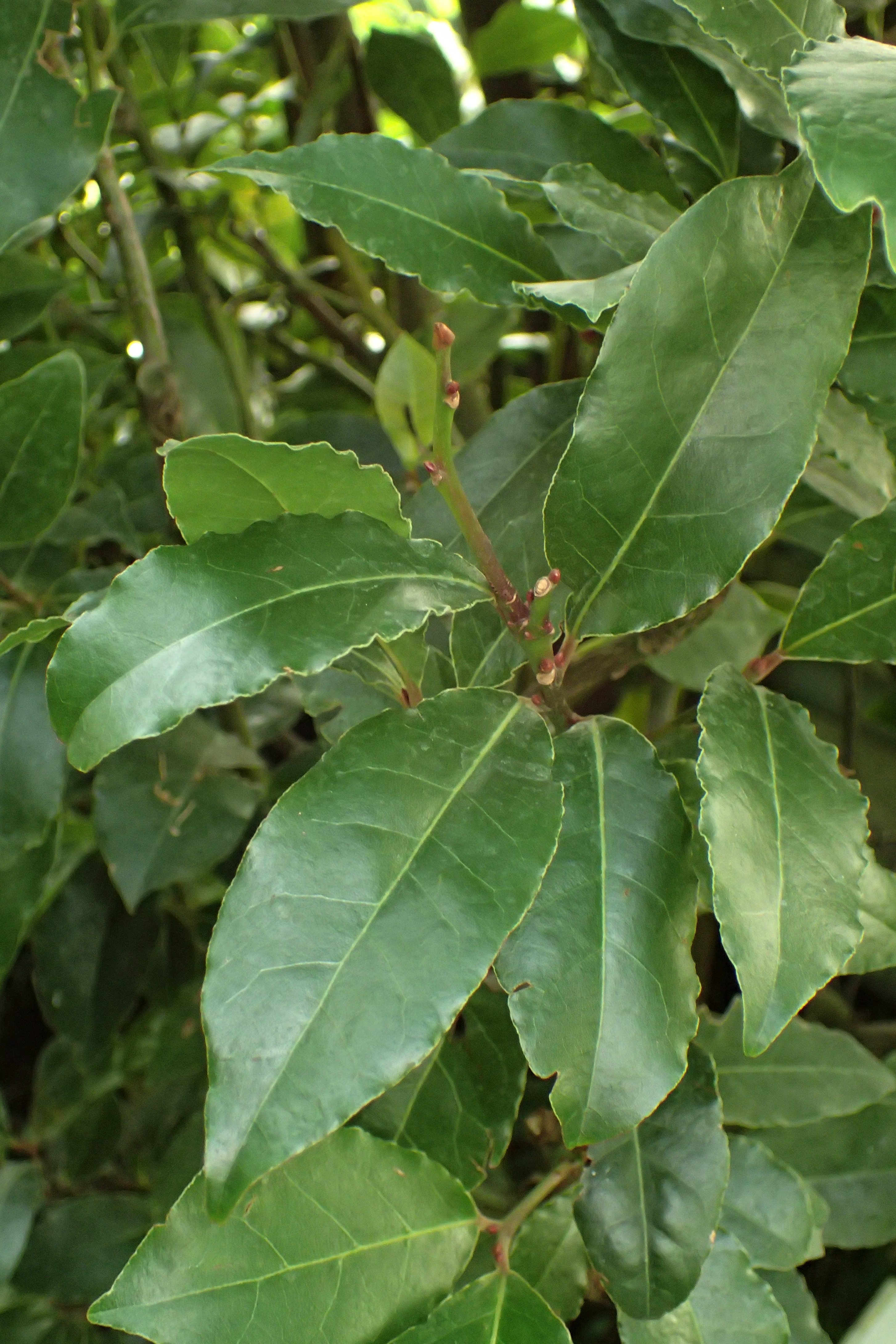

Sweet Bay

Sweet Bay is a small evergreen tree or shrub with dark, leathery, pointed leaves. Bay makes an excellent container plant. Clip the plant to make an beautiful topiary. Use bay leaves to make fragrant, long-lasting wreaths, and as bases for flower arranging.
How to grow: Bay is not hardy in this zone. Place the plant in a container so it may be moved outdoors to a sunny spot after danger of frost has passed. Protect the plant from wind. Bay prefers rich moist, well-drained soil, however, grows slowly. In the spring, switch the plant to next size container and put fresh potting soil around the roots.. In winter, place the container in indirect light and a cool room. As with most herbs, bay is relatively pest free.
Propagation: Propagate bay by harvesting semi-ripe side shoots in late summer, or by layering. Plant cuttings, treated with a rooting hormone, in heated propagation trays with high humidity.
Harvesting: Pick leaves at any time for fresh use. Use mature leaves in summer for drying.
Preserving: Dry individual leaves. Note: leaves that are more than one year old loose flavor.
Culinary uses: There are so many uses for this flavorful herb, it is difficult to list them all. This is a sampling: Place a bay leaf in bouquet garni for soups, stews and sauces. Place in Bouillon for fish. Use in stocks, broth, marinades, or spaghetti sauce. Bay added to barbecue sauce adds wonderful flavor. Remember to remove the leaf before serving. Place bay in the rice storage container to add flavor. Add two or three leaves to white vinegar and place in a decorative bottle. Makes a great gift for the gourmet cook.
Other uses: Some folk use a twig of bay in the flour container to discourage weevils. Hang a branch in the kitchen to freshen the air. Crumble the leaves in potpourri.
Note: All laurels, except sweet bay are poisonous.
4116 E. 15th Street
Tulsa, OK 74112-6198
(918)746-3701